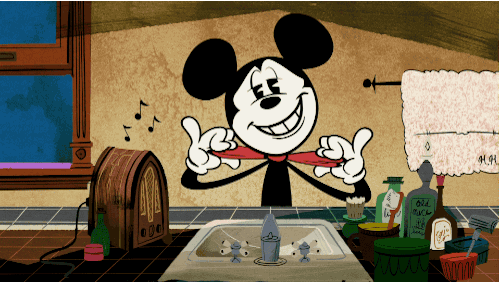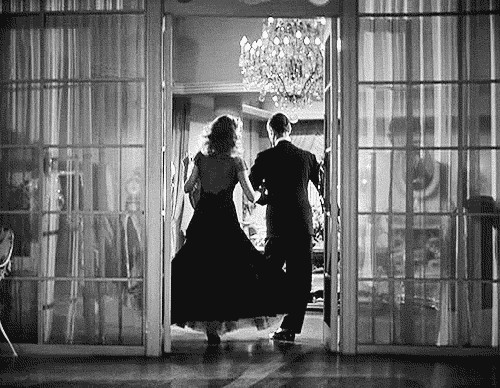A whirling noise in the distance, followed by a male in a bow tie and a female in a summer dress running out of a blue police box. A small wooden puppet with a large blue bow tie that is still there when the puppet comes to life.. Or a sharply dressed man hunting around for information in order to save the world from annihilation. All three examples are notable by a bow tie that the character wears. Whether it be the Doctor from Dr. Who, Pinocchio, or James Bond, each wears a bow tie very well, and accentuates it for that very character.
The bow tie has it’s origins, not in France like many think, but in Croatia. The French military forces had seen the way the Croatian soldiers tied the necktie in order to keep the collars of their shirts together during the Thirty Year War. After that, tobacco magnate Pierre Lorillard wore one to the Tuxedo Club, and his black and white fashion sense blossomed into becoming the Tuxedo we know currently in fashion. Typically the bow tie is worn as an accessory to accentuate the neck, helping draw eyes up to the face and away from the shoulders and chest.
Snag a bow tie and wear it! It is that simple, although tying a bow tie isn’t! Many pieces of clothing can be paired with the flourished bow, and probably the most notable look is the button up shirt. Sure, it may look a little dated, but the classics never truly die…. bow ties have been worn by people looking to make better impressions since the 17th century.
Many characters have been notably wearing bow ties, including the ever popular James Bond, in all of his different actors, the bow tie is always there, giving the actor an air of distinguished quality. There has been the infamous Dr. Nye, who wears a bow tie while explaining how, and why, science works. His quote, “If you’re working with liquid nitrogen and your tie falls into it, it’s funny in a way to the audience but it’s also — pun intended — a little bit of a pain in the neck.” really drives home the differences between a neck tie and a bow tie. So don’t underestimate the use of this small, but extremely elegant addition to your dressing up, and wear them with pride this Bow Tie Day!

Word of the Day
| |||
| Definition: | (noun) A socially awkward or tactless act. | ||
| Synonyms: | faux pas, gaffe, slip, gaucherie | ||
| Usage: | She smiled again, turned, and walked away, leaving George to reckon up all the social solecisms he had contrived to commit in the space of a single moment. | ||

Idiom of the Day
half-pint— Any small, weak, and/or insignificant person. Alludes to a pint, a unit of liquid measurement. |

History
Caleb Davis Bradham Begins Selling "Pepsi-Cola" (1898)
| Bradham was a pharmacist who invented a soft drink made with kola nut extract, vanilla, and "rare oils." He believed his drink aided digestion and renamed it "Pepsi-Cola" after the kola nut and pepsin, an enzyme that aids in digestion. In 1902, he incorporated the Pepsi-Cola Co, and, in 1931, the trademark and assets were bought by Charles Guth, who improved the formula and marketed a 12-ounce bottle for five cents with huge success. |
Johann Wolfgang von Goethe (1749)
Goethe was a German poet, dramatist, novelist, and scientist whose dramatic poem Faust is considered one of the world's greatest poetic and philosophic creations. In it, he represents Faust, the legendary scholar who sold his soul to the devil, tragically, as a singularly modern figure who is condemned to remain unsatisfied by life. In his later years, Goethe was celebrated as a sage and visited by world luminaries.
Plague Sunday
When the plague reached the village of Eyam, Derbyshire, England, in 1665, about three-fifths of the town's population was wiped out. But under the leadership of Vicar William Mompesson, the villagers voluntarily isolated themselves from other villages in the parish. Every year on the last Sunday in August, a procession of clergy, standard bearers, choir members, and musicians forms at Eyam's parish church and proceeds up the road leading toward a place up in the hills known as Cucklet Dell. A simple sermon pays tribute to the plague victims and the 74 villagers who survived.

1774 - The first American-born saint was born in New York City. Mother Elizabeth Ann Seton was canonized in 1975.
1830 - "The Tom Thumb" was demonstrated in Baltimore, MD. It was the first passenger-carrying train of its kind to be built in America.
1907 - "American Messenger Company" was started by two teenagers, Jim Casey and Claude Ryan. The company's name was later changedto "United Parcel Service."
1922 - The first radio commercial aired on WEAF in New York City. The Queensboro Realty Company bought 10 minutes of time for$100.
1963 - Dr. Martin Luther King, Jr., gave his "I Have a Dream" speech at a civil rights rally in Washington, DC. More than 200,000 people attended.
1963 - Peter, Paul & Mary performed "Blowin' In The Wind" before Civil Rights marchers who had gathered in Washington to hear Martin Luther King Jr. speak.
1964 - The Beatles appeared on the cover of "LIFE" magazine.
1986 - Tina Turner was awarded a star on the Hollywood Walk Of Fame.
2004 - George Brunstad, at age 70, became the oldest person to swim the English Channel. The swim from Dover, England, to Sangatte, France, took 15 hours and 59 minutes.
DAILY SQU-EEK


NASA engineer Ernie Wright looks on as the first six flight-ready primary mirror segments for the James Webb Space Telescope are prepped to begin final cryogenic testing at the Marshall Space Flight Center. Intended to serve as a replacement for the Hubble Space Telescope and the Spitzer Space Telescope, the James Webb Space Telescope is currently under construction and scheduled to launch in October 2018. It is expected to enable a broad range of investigations across the fields of astronomy and cosmology.

Huge Hornet Nest Makes It Look Like Statue is Wearing a Turban

knit
knit
knit
knit
knit

crochet
crochet
crochet
crochet
crochet

RECIPE
Healthy Orange Lime Refresher


CROCKPOT RECIPE

SWEETS, crockpot
baked apples


ADULT COLORING

Reproduction of a stained glass

CRAFTS
Oversize flower brooches are popping up on runways. You can try out the trend inexpensively with this easy DIY. The project uses an unlikely jewelry making material - a sheet of The Original Shammy. The Shammy flower features a nice autumn color, is sturdy yet soft, won't fray and holds many times its own weight in water.
Project Materials:
- 1 package of The Original Shammy ($1)
- A jewelry pin back (5 cents)
Total: 55 cents per brooch
One Shammy will provide enough material for two brooches.
Cut two strips that are the length of the Shammy and about 2 to 2 1/2 inches wide.
Cut a pointed tooth edge all along one edge of each strip.
Separate each "tooth" by cutting a straight line almost completely through the strip. Keep the points slightly tapered rather than sharply triangular.
Roll up the strip, adhering with hot glue or fabric glue. When one strip ends, butt the next strip up against it and continue to roll.
Flatten the flower out. Cut a small circle from the Shammy. Cut two small holes to allow the pin back to come through. (Locate the pin above the center of the flower.) Glue the pin back to the circle then glue the circle to the back of the flower.
Put a book on the flower overnight to flatten it out more if needed.
For a variation on this flower, keep a flat edge for the petals rather than a tapered edge. This will create a flower that looks more like a mum rather than a dahlia.

CHILDREN'S CORNER ... crafts
TABLE DECORATION


QUOTE




CLEVER
FUNNY/INTERESTING/ODD PRODUCTS



EYE OPENER
Photos That Will Restore Your Faith In Humanity
earth porm
Some people are serious jerks, but we can’t let the bad seeds out there destroy our faith in humanity. There are plenty of zeros out in the world, but there are also plenty of everyday heroes. So keep smiling at strangers and offering favors to neighbors, as acts of kindness are passed on and can travel a long way.
Still feeling unsure if mankind deserves your generosity? These photos will restore your faith in humanity, as the people on this list offer excellent examples of kindness that prove good always prevails. So keep fighting the good fight with smiles, kind favors, and plenty of hugs–the world appreciates it, even if it doesn’t always feel that way.
1. Jacqueline Kiplimo gives up wining first place in order to help a disabled runner finish a marathon in Taiwan.
 Photo Credit: nairaland.com
Photo Credit: nairaland.com

2. Every Sunday, this hair stylist from New York spends his day giving away free haircuts to the homeless.

Photo Credit: Mark Bustos

3. Every evening, this man hops in a lake with his sick dog because the water helps reduce his four-legged friend’s pain.
 Photo Credit: Stonehouse Hudson
Photo Credit: Stonehouse Hudson

4. In order to cheer up young patients at Children’s Hospital in Le Bonheur, workers from Memphis Cleaning Company dress up as Superhereos.
 Photo Credit: mbanetworkjapan.com
Photo Credit: mbanetworkjapan.com

5. When no one showed up for this cute little boy’s birthday party his mom sought help via Facebook. As a result, good-hearted firefighters, officers and local kids showed up to make his birthday extra special.


 Photo Credit: John Buratti
Photo Credit: John Buratti



6. Two dudes from Norway save a baby lamb from drowning in the ocean.


 Photo Credit: imgur
Photo Credit: imgur



7. Man uses an umbrella to save a little kitten from drowning.
 Photo Credit: imgur
Photo Credit: imgur

8. This officer talked this man out of committing suicide. The man went on to have a great life and two kids, eight years later he presented the officer that saved his life with an award at The American Foundation Of Suicide.
 Photo Credit: imgur
Photo Credit: imgur

9. Man dives into frozen lake to rescue an innocent duck from drowning.



 Photo Credit: Lars Jørun Langøien
Photo Credit: Lars Jørun Langøien



10. Little girl sells her stuffed animals in order to donate money to a local animal shelter.
 Photo Credit: imgur
Photo Credit: imgur

11. Soldier caring for a kitten he rescued in Korea
 Photo Credit: imgur
Photo Credit: imgur

12. This 84-year-old Grandmother was embarrassed about wearing her nightgown at the hospital, and so her Grandson wore one too.
 Photo Credit: imgur
Photo Credit: imgur

13. Christmas Elves are real! Here they are surprising a homeless man with food and gifts.
 Photo Credit: Roman Atwood
Photo Credit: Roman Atwood

14. Dry cleaner offers free service for jobless community members.
 Photo Credit: quipster.wordpress.com
Photo Credit: quipster.wordpress.com

15. An elderly man suffered a heart attack while shoveling his driveway. After paramedics rushed him to the hospital, they returned to his home to shovel his driveway for him.
 Photo Credit: imgur
Photo Credit: imgur

16. People built the perfect swing set for children in wheelchairs.
 Photo Credit: imgur
Photo Credit: imgur

17. This Wendy’s employee deserves a raise! He removed a table umbrella to help shelter an elderly patron from the rain.
 Photo Credit: imgur
Photo Credit: imgur

18. Firefighter rescues kitten from house fire and provides him with oxygen.
 Photo Credit: imgur
Photo Credit: imgur

19. A mass of Japanese train passengers work together to push a 32-ton train car away from the platform in order to free a woman trapped in a gap.
 Photo Credit: imgur
Photo Credit: imgur

20. Russian firefighter saves cat from house fire.
 Photo Credit: reddit
Photo Credit: reddit

21. Someone noticed this homeless man reading the same book over and over, and so they gifted him a Kindle.
 Photo Credit: imgur
Photo Credit: imgur

22. A man takes off his shoes and gives them to a homeless woman in Rio De Janeiro.
























No comments:
Post a Comment